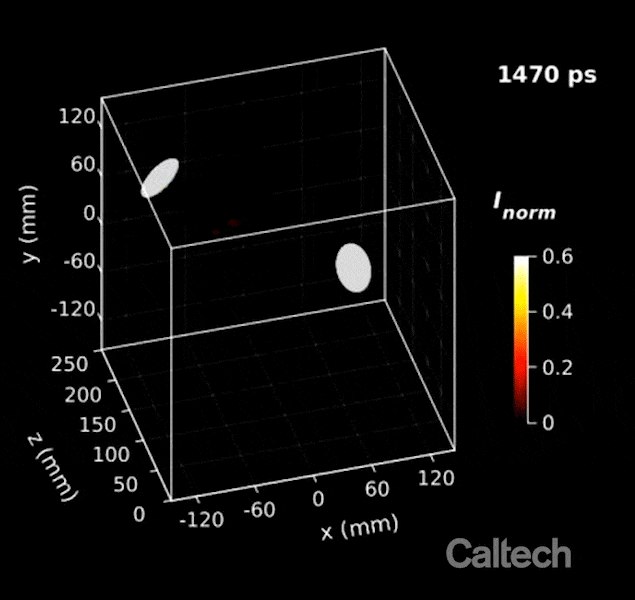Researchers at Caltech in the US have figured out how to record videos of light moving in three dimensions for the first time. The camera is capable of shooting videos at up to 100 billion frames per second.
To put that into perspective, the average smartphone is limited to just 60.

Researcher Lihon Wang had previously developed technology that can reach blistering speeds of 70 trillion frames per second — fast enough to see light traveling by. But there was a problem with that. Just like the camera in a cell phone, it could only produce flat images.
Now, he decided to take it a step further and move into 3D.
The new device uses the technology that Wang has been exploring for years, and is fast enough to take 100 billion pictures in a single second. If the entire world took as many photos as possible in a single second, we still wouldn’t reach this performance. Wang calls this “single-shot stereo-polarimetric compressed ultrafast photography,” or SP-CUP.
With the CUP technology, all the frames of a video are captured in one action without repeating the event. This makes a CUP camera extremely quick. Now, Wang has added a third dimension to this ultrafast imagery, essentially making the camera “see” just as humans do.
When we look at our surroundings, we perceive that some objects are closer and others are farther away. This is possible because of our two eyes, as each sees objects and their surroundings from a different angle. The information from these two images is combined by the brain into a single 3-D image. The SP-CUP camera works in essentially the same way, Wang added in a press release.
“The camera is stereo now. We have one lens, but it functions as two halves that provide two views with an offset. Two channels mimic our eyes,” Wang said in a statement. Just like the brain does with the signal it gets from the eyes, the computer that runs the camera processed data from the two channels into a 3-d movie.
The camera also has the ability to see the polarization of light waves, something that humans can’t. This refers to the direction in which light waves vibrate as they travel. Ordinary light has waves that vibrate in all directions but polarized light has been altered so all the waves vibrate in the same direction. This has a myriad of scientific applications, the researchers explain, from polarized sunglasses, LCD screens, and camera lenses to optical laboratory measurements.
The camera’s combination of high-speed 3-D imagery and the use of polarization information makes it a powerful tool that may be applicable to a wide variety of scientific problems, Wang said. He hopes it will help researchers better understand the physics of sonoluminescence, a phenomenon in which sound waves create tiny bubbles in water or other liquids.
“Some people consider this one of that greatest mysteries in physics,” Wang said. “When a bubble collapses, its interior reaches such a high temperature that it generates light. The process that makes this happen is very mysterious because it all happens so fast, and we’re wondering if our camera can help us figure it out.”
The study was published in the journal Nature Communications.








